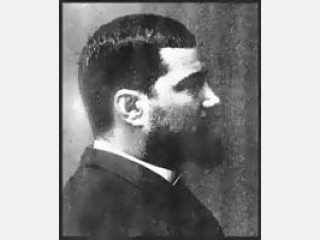
Lucien Gaulard biography
Date of birth : -
Date of death : 1888-11-26
Birthplace : Paris, France
Nationality : French
Category : Science and Technology
Last modified : 2010-05-31
Credited as : Scientist and inventor, system of distributing power , chemistry of explosives
3 votes so far
Lucien Gaulard was born in Paris in 1850. Gaulard was a French scientist, primarily interested in chemistry of explosives, but later he shifted his interests to electrotechnics. He developed a thermochemic battery and he is particularly known for his work with induction coils (transformers).
In 1882, Goulard and his English colleague Gibbs patented a system of distributing power using alternating current and two-coil induction devices. They used devices (then known as secondary generators) of the Ruhmkorff type in the first alternating current distribution system and had a 1:1 ratio and were used with their primaries in series.
A power transformer developed by Lucien Gaulard and John Gibbs was demonstrated in London in 1881, and attracted the interest of Westinghouse. Transformers were nothing new, but the Gaulard-Gibbs design was one of the first that could handle large amounts of power and promised to be easy to manufacture.
In 1885, Westinghouse imported a number of Gaulard-Gibbs transformers and a Siemens AC generator to begin experimenting with AC networks in Pittsburgh. In hands of Westinghouse the transformers received really practical implementations.
Gaulard’s transformers were successfully presented in 1884 on the international exhibition in Turin. The farthest lamp fed, on the Torino-Lanzo railway line, was at 40 km distance from the 2,000 V generator with 133 Hz frequency. The series connection led to unsatisfactory regulation unless all the transformers were equally loaded. However, these transformers were in use until 1912.
The device presented here was deviced by Gaulard and Gibbs in 1884. It was also used by G. Ferraris in his experiments in 1884. Its iron core is still open. The two windings consist of copper sheet flat rings, 0.25 mm thick, cut at a certain point of the circumference and provided with projections at both ends.
The rings are inserted on an iron wire core and are insulated one from the other by means of paper or varnish. The projections of the next rings are shifted along the circumference in order to form a spiral. Afterwards the projections are metallically connected alternating the rings and this forms the primary winding.
The secondary winding is obtained in the same way; this connection stops at one fourth of the column and the two ends are taken out; the process continues with the second fourth of the column and so on, so that the secondary winding is subdivided in four sections, that may in turn be connected in series or in parallel one to the other, with reference to the output line, by means of the plugs arranged on the front side. In this way it’s possible to have on the secondary winding a voltage and a current different from the ones feeding the primary winding.
In the present model the primary winding has 455 rings, as many as the secondary winding. Nowadays it’s possible to detect the main faults of this device: large reluctance of the iron-air magnetic circuit; small area of the iron core section; weak insulation of the turns which doesn’t allow to reach high operation voltages; small ratio between the primary and secondary turns number, even connecting all of the secondary sections in parallel.
Gaulard & Gibbs’s secondary generator first type with open rectilinear iron core, 1884
In the years following the experiments in London and Turin, Gaulard became convinced of the usefulnes’s of using a closed iron core and taking the advice of Mr. Esson he made the secondary generators like the model shown here, consisting of two generators of the previous kind side by side with one single core obtained by connecting the top and bottom ends of the two previous linear cores. So it was possible to obtain generators of a power of 1 kW or more.
Gaulard was ingenious, but unlucky inventor. During his life his work was not recognized in France. Gaulard fell in depression state and seems he went mad, was sheltered in clinic where 1988 died the 26 November. Now Gaulard fame is memorized with tombstone in the railway station of Lanzo, there is also a street with his name in Paris.
















